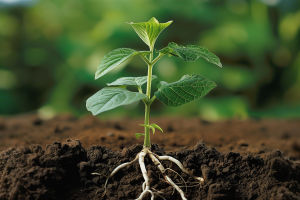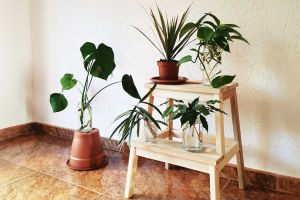Hello, plant lovers! Have you ever wondered how tiny seeds can survive through harsh seasons, waiting quietly for the perfect moment to sprout?
Seeds act like natural "time machines," entering a special state called dormancy that allows them to pause growth until conditions are just right.
Today, we'll dive into the fascinating science behind seed dormancy and germination, uncovering how plants master this survival strategy. Ready to explore this natural wonder?
What Is Seed Dormancy and Why Does It Matter?
Seed dormancy is a biological state where a viable seed temporarily stops growing, even when environmental conditions seem suitable. This pause helps seeds avoid germinating during unfavorable times, such as drought or cold, increasing the chances that seedlings will survive and thrive. Dormancy is crucial for plants to synchronize germination with optimal seasons, ensuring successful growth and reproduction. It also plays an important role in agriculture by affecting crop yield and uniformity.
The Hormonal Balance Behind Dormancy
Two key plant hormones regulate seed dormancy and germination: abscisic acid (ABA) and gibberellins (GA). High levels of ABA promote and maintain dormancy, preventing premature germination. Conversely, GA encourages germination by counteracting ABA's effects. The balance between these hormones shifts as environmental signals like temperature and moisture change. For example, during cold stratification (exposure to cold), ABA levels decrease while GA levels rise, triggering seeds to break dormancy and begin growing.
Genetic and Molecular Controls
Recent research highlights genes like DOG1 (Delay of Germination 1) that play a central role in maintaining seed dormancy. DOG1 works alongside ABA to keep seeds dormant until conditions improve. Scientists have also discovered molecular complexes, such as FIP1, that regulate hormone signaling pathways controlling dormancy and germination. These genetic mechanisms ensure seeds respond precisely to environmental cues, making dormancy a finely tuned survival strategy.
Types of Seed Dormancy
Seed dormancy can be classified into several types:
• Physiological dormancy: Caused by internal chemical inhibitors like ABA.
• Physical dormancy: Due to hard seed coats that prevent water or oxygen from entering.
• Morphological dormancy: Immature embryos inside seeds that need time to develop.
• Morphophysiological dormancy: Combination of immature embryos and physiological inhibitors.
• Combinational dormancy: Seeds with both physical and physiological dormancy.
Each type requires specific environmental triggers or treatments to break dormancy and allow germination.
How Seeds Break Dormancy and Start Growing
Seeds use environmental signals such as temperature changes, light exposure, moisture, and even fire or fume chemicals to know when to wake up. For instance, some desert seeds remain dormant until heavy rains arrive, while certain forest seeds need cold winters to break dormancy. Humans can also assist by scarification (scratching seed coats) or soaking seeds to mimic natural processes. Once dormancy breaks, GA levels increase, enzymes activate, and the embryo begins to grow, pushing the radicle (young root) out to start a new plant.
The Ecological and Agricultural Significance
Seed dormancy is vital for ecosystem stability, allowing plants to time their growth with favorable seasons and avoid competition or harsh conditions. In agriculture, understanding dormancy helps farmers improve seed germination rates and crop yields. Researchers are exploring genetic and hormonal controls to breed crops with optimal dormancy traits, balancing seed storage and timely sprouting for food security.
Let's Appreciate Nature's Timekeepers!
Seeds' ability to "pause" life and wait patiently for the perfect moment is a remarkable natural feat. Have you ever tried breaking seed dormancy in your garden? Share your experiences and questions with us! Together, we can marvel at these tiny time machines and learn how to nurture new life from them.
With curiosity and care, we can unlock the secrets of seed dormancy and enjoy the miracle of germination in our own homes and gardens. Happy planting!
This article is based on recent scientific studies and expert research on seed dormancy mechanisms and their ecological and agricultural importance.

